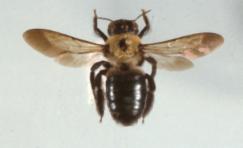
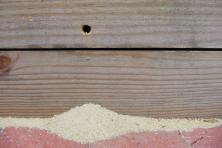
Carpenter Bee Carpenter Bee Evidence
THE CARPENTER BEE
Carpenter Bees are very similar in appearance to a Bumble Bee. An easy way to tell the difference between the two is that the Carpenter Bee does not have any hair on their behind. Carpenter Bees drill perfect 3/8 inch holes in facia boards, build a wall of nectar and lay their eggs. Over time they can do considerable damage if left untreated.
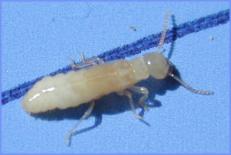
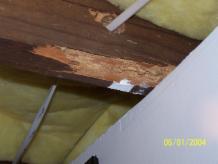
Eastern Subterranean Termite Termite Damage
THE EASTERN SUBTERRANEAN TERMITE
The only termites found here in northwest Ohio are Eastern Subterranean Termites. They tend to be found in pockets throughout the area. Termites are active year round as long as the structure they are infesting is heated. Termites have been found in a home in our area when it was -17' F! Don't be fooled by the fact your home is new either. They have been found in a 2 week old garage.
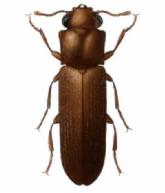
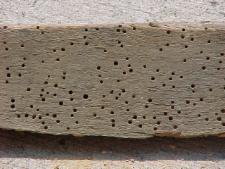
Powderpost Beetle Powderpost Beetle Exit Holes
THE POWDERPOST BEETLE
The Powderpost Beelte loves cool, damp dark places where no air moves. Therefore the perfect place to find them is in a damp crawl space or basement. The adult only lives for approximately 24 hours. In their short lifetime they mate, lay their eggs on the wood, then die. The larve hatch then bore into the wood. Once in the wood they can live for up to 12 years consuming the starch content of the wood affecting the structural integrity of the member. It is a very rare instance when a live Powderpost Beetle is discovered.


Carpenter Ant Carpenter Ant Damage
THE CARPENTER ANT
Carpenter Ants vary in size from a 1/4 to 1/2 inch in size. Sometimes they send out swarms of winged ants known as reproductives. These reproductives are often confused with winged termites. Contrary to popular belief Carpenter Ants do not eat the wood, they merely hollow it out to construct a nest. They will nest in dry wood but do prefer moist wood. Trees hanging over a structure can be a contributing factor to having a nest within your home.